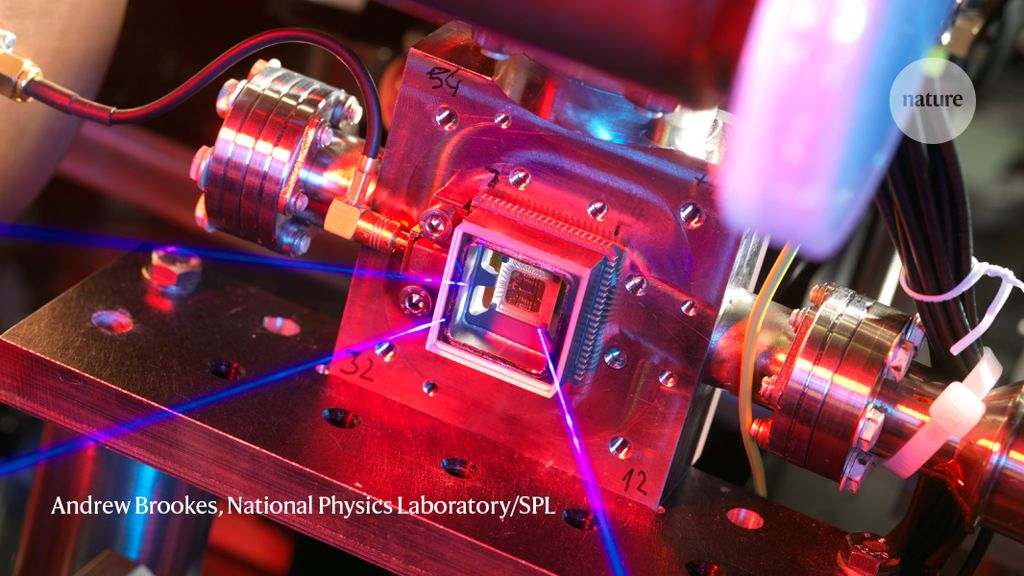An ion trap uses electric fields to hold a charged particle in place. Scientists used a similar device to immobilize a ytterbium ion before chilling it. Credit: Andrew Brookes, National Physics Laboratory/SPL
Atomic and molecular physics
Researchers have cooled an ion in an ultra-cold gas until it moved so slowly that it exhibited quantum behaviour.
For decades, physicists have blasted materials with lasers to cool them to temperatures of just a fraction of a kelvin. Scientists have applied this technique to individual ions, which carry a charge, and to low-density gases consisting of uncharged atoms; both targets respond to chilling in ways predicted by the laws of quantum physics, which govern the Universe at very small scales.
To study how ultracold atoms and ions interact under quantum conditions, Rene Gerritsma at the University of Amsterdam and his colleagues used electric fields to trap a single ytterbium ion. They then placed the ion inside a cloud of several thousand lithium atoms that a laser had pre-cooled to just a few millionths of a kelvin. This cooled the ion to less than one ten-thousandth of a kelvin — slowing its thermal motion to a crawl.
Observations of the ion colliding with surrounding atoms revealed quantum effects, a first for an ion inside a cloud of neutral atoms.

